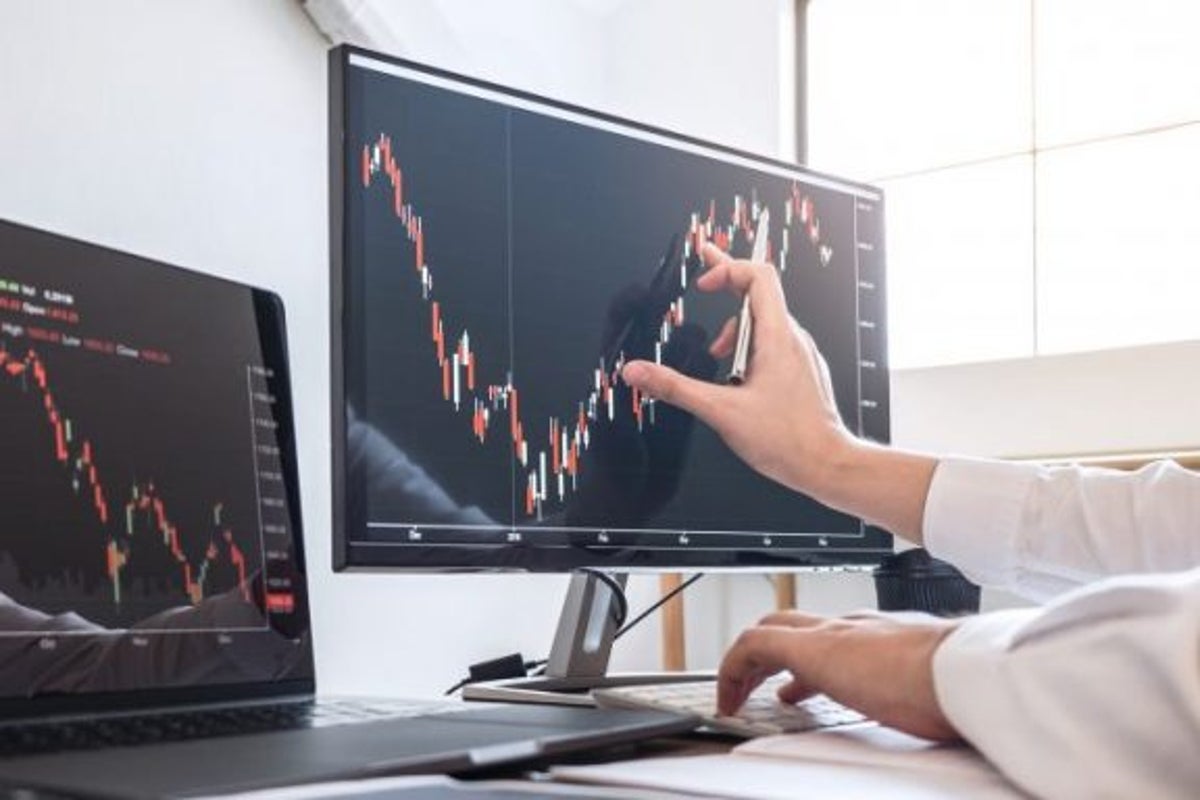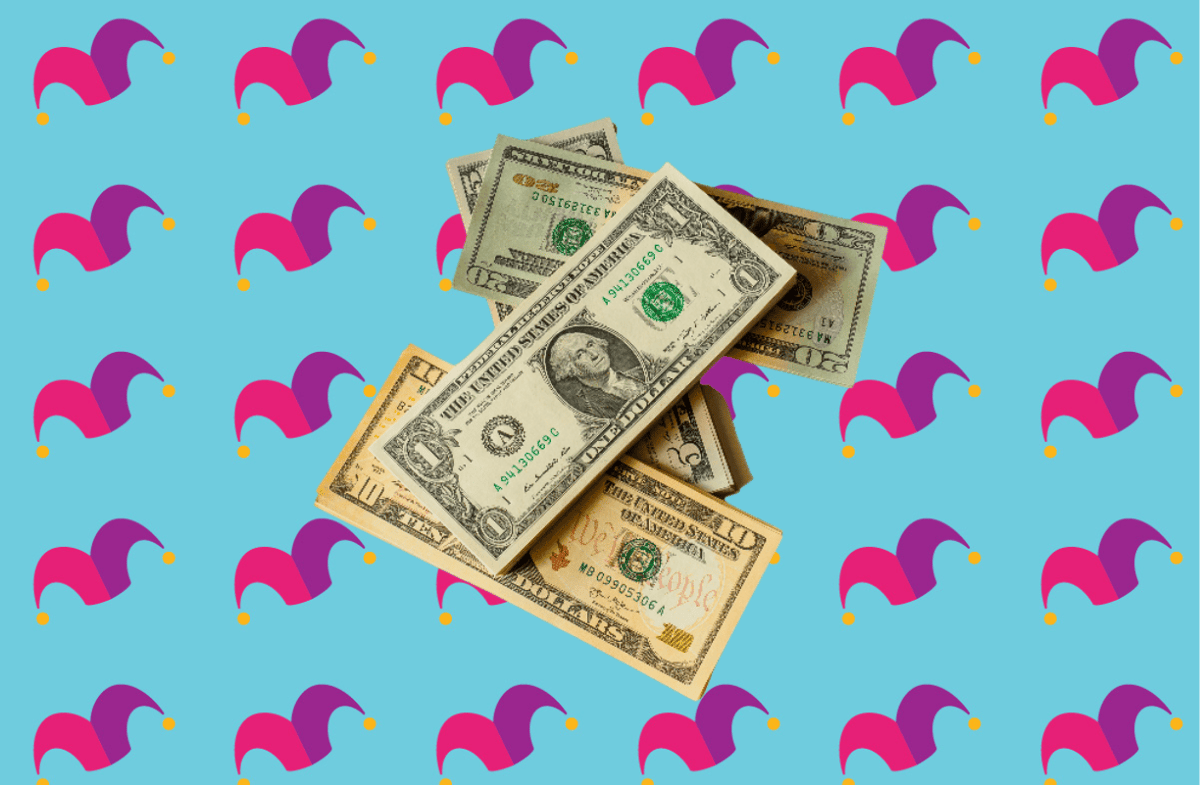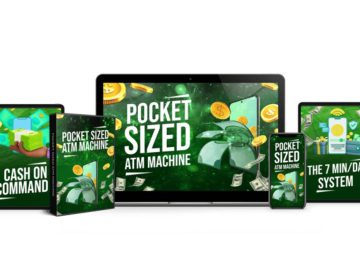Forex trading, also known as foreign exchange trading, is the act of buying and selling currencies in order to profit from the changes in their exchange rates. But how to make money trading forex? Making money through forex trading requires a combination of knowledge, strategy, and discipline. One key aspect to successful trading is education. It’s crucial to learn about the factors that influence currency exchange rates, how to analyze market trends, and different trading strategies.
While forex trading can be lucrative, it’s important to remember that it comes with risks, and there are no guarantees of profit. It’s advisable to start with a demo account to practice your skills before trading with real money and to only invest what you can afford to lose. With the right knowledge, strategy, and mindset, it is possible to make money through forex trading.
Disclosure: CFDs are complex instruments and come with a high risk of losing money rapidly due to leverage. 69% of retail investor accounts lose money when trading CFDs with this provider. You should consider whether you understand how CFDs work and whether you can afford to take the high risk of losing your money.
Show More
Learn More With The Forex Trading Coach
6 Simple Tips for Making Money Trading Forex
Beginners need to ensure they follow several key measures to increase their chances of being profitable forex traders.
1. Learn the Basic Forex Trading Terms
Understanding the jargon that forex traders often use helps you to communicate with other traders accurately. It can also help you gain a foothold on what’s required to analyze currencies effectively.
Currency Pairs
In the foreign exchange market, currencies are traded relative to one another in pairs. Currency pairs are categorized as majors, minors and exotics depending on the volume traded. When the U.S. dollar is not part of a currency pair, it is known as a cross. Majors typically have the largest trading volume, tighter dealing spreads, higher liquidity and lower volatility compared to other forex pairs. The most actively traded major currency pair is the euro quoted in U.S. dollar terms that are written EUR/USD in market shorthand.
Minors include the commodity currencies and the Scandinavian currencies quoted against the U.S. dollar, such as the New Zealand, Canadian, and Australian dollars. Exotic currency pairs involve less-traded currencies from developing countries such as the Mexican peso and the South African rand.
Point in Price (pip)
A point in price or pip is the conventional minimum exchange rate movement allowed in a particular currency pair. For most pairs, a pip is a 0.0001 move in the fourth decimal point of an exchange rate, although for some pairs, like USD/JPY, a pip is a 0.01 move in the exchange rate. Using the EUR/USD pair as an example, the smallest unit move this currency pair exchange rate can make is $0.0001.
Base Currency and Quote Currency
The left currency in a currency pair is known as the base currency and the right currency is the quote or counter currency. Charts reveal the movement of a base currency compared to a quote currency. If the price on a chart rises, it means that the base currency has strengthened against the quote currency, which has weakened. The opposite applies when the price decreases.
Bid
A bid is the exchange rate that a market maker quotes to buy a specific currency pair.
Ask
Ask refers to the ask price. This represents the price at which the broker is willing to sell the base currency in the currency pair. The ask price is also known as the offer price. It is the best available price for traders who want to buy the base currency from the market. A market maker’s offer rate will generally be higher than their bid rate.
Spread
Unless you tell them your desired trading direction, forex market makers and brokers generally provide bid and offer quotations for the exchange rate of the base currency expressed in terms of the quote currency. The difference between this two-way quote is known as the dealing spread or the spread. Widening the dealing spread relative to the Interbank forex market provides an income stream for forex brokers. Some brokers also charge additional trading costs, such as a commission or a per-trade fee.
Lots
A lot is a trading unit that represents a minimum transactable amount of a currency pair traded at an online broker or on a futures exchange, although lots are generally not used among those operating in the over-the-counter Interbank forex market. As a retail forex trader, common lot sizes include standard lots of 100,000 base currency units, mini lots of 10,000 units, micro lots of 1,000 units and nano lots of 100 units.
Long and Short
Going “long” and “short” refer to different positions that traders can take in the market. These positions define whether a trader is buying or selling a specific currency pair.
The “long” position involves buying the base currency and selling the quote currency in a currency pair. For example, in the EUR/USD pair, going long means buying euros and simultaneously selling an equivalent amount of US dollars. You can expect the value of the base currency, in this case, the euro, to rise in comparison to the quote currency, the US dollar.
The “short” position is the opposite of the long position. It involves selling the base currency and buying the quote currency. Using the same example, going short in the EUR/USD pair means selling euros and buying US dollars. In this case, the trader expects the value of the base currency, the euro, to decrease in relation to the quote currency, the US dollar.
2. Find a Reputable Forex Broker
Trading profitably may be worthless if you’re unable to withdraw your trading gains. Some unregulated and disreputable online forex brokers scam their unsuspecting clients by unfairly restricting them from accessing their margin account funds, so be sure to choose a reputable broker.
A good forex broker will show its commitment to securely handling its clients’ funds by submitting to regulations from established financial authorities. Being regulated also indicates that the broker aims to abide by high ethical and financial standards.
3. Start With a Demo Account
Seeing a professional trader make money trading forex can make you eager to start immediately with a live trading account. However, replicating those positive results with your own money and lesser experience level can be challenging.
To get a good grasp of how the foreign exchange market moves and how a trading platform functions, beginners should start trading in a demo account first. Losing virtual money is easier to handle emotionally than losing your hard-earned cash, but demo trading does give you a taste of what to expect when you go live.
Even experienced traders often use a demo account to check out a new broker and to test and practice using a new trading strategy in a real-time environment.
4. Begin With a Small Investment
Even if you’ve already grasped the basics of trading forex using a demo account, it’s best to initially only put a small amount of your trading capital at risk when you first open a live account. Don’t risk more than you can handle losing. It’s easier to accept losing a small amount of money than a large sum, regardless of how much money you have.
5. Learn Strategies to Help Maximize Trades
Don’t expect to become a profitable forex trader after attending a weekend trading course. Learning different trading strategies, market analysis and how exchange rates move requires time. Take as much time as you need to practice in a demo account, and ensure you’ve been consistently profitable for several months before switching to a live account.
You’ll also want to learn how to read charts, use technical indicators and employ different trading strategies to optimize your chances of success. Moreover, study the fundamental factors that impact currencies and make their exchange rates move.
6. Keep a Trading Journal
To avoid repeating mistakes, you need to keep and refer to a trading journal. Keeping a record of your trades provides valuable insight into how you viewed the trade and your thought process before you entered and exited it. Those are valuable metrics for you to use for making better future trades. A trading journal also provides you with the ability to learn from unsuccessful trades.
How to Read a Forex Quote
When reading a forex quote, it is important to understand that it consists of two currencies, with one being the base currency and the other quote currency. Here is a step-by-step guide on how to read a forex quote:
- Look at the currency pair: The forex quote will always show the currency pair that you are looking at. For example, if you are looking at the EUR/USD pair, the Euro (EUR) is the base currency and the US Dollar (USD) is the quote currency.
- Identify the bid price: The bid price is the price at which the broker is willing to buy the base currency in exchange for the quote currency. It is always the first price listed in a forex quote.
- Identify the ask price: The ask price is the price at which the broker is willing to sell the base currency in exchange for the quote currency. It is always the second price listed in a forex quote.
- Understand the spread: The spread is the difference between the bid price and the ask price. It is essentially the cost of making a trade in the forex market.
- Determine the direction of the trade: Based on the bid and ask prices, you can determine whether you want to buy or sell the currency pair. If you believe the base currency will strengthen against the quote currency, you would buy the pair. If you believe the base currency will weaken against the quote currency, you would sell the pair.
Example of How to Make Money Trading Forex
Let’s use an example of how to make money trading forex.
Select a Currency Pair
You might decide to trade the most popular currency pair EUR/USD because it tends to display the tightest dealing spreads and a relatively smooth market.
Choose Your Forex Trading Strategy
You can trade forex in the spot, forward and futures markets, although the vast majority of forex traders will use the spot market to trade currency pairs in real-time. Trading forex as a beginner usually means opting for spot trading. The over-the-counter forward market allows traders and hedgers to enter into a contract with a market maker to secure a rate to exchange a specific amount of one currency for another on a future delivery date. The futures market operates on an exchange where currency pairs trade in multiples of specific contract amounts for standardized delivery dates.
Analyze the Chart and Open a Position
Opening a long position in a forex pair means that you believe the base currency will rise versus the quote currency. Going short on the pair means you expect the base currency to decline versus the quote currency.
Using EUR/USD as an example, you might be bullish on the pair and believe the euro will strengthen against the dollar. You’ll therefore want to open a long position in the EUR/USD pair at the lowest possible exchange rate.
After using technical analysis to analyze the EUR/USD exchange rate chart for support and resistance and after checking for any relevant fundamental factors, you might target an exchange rate of 1.000 to buy euros and sell U.S. dollars.
Manage Your Risk
Traders often manage their risk by placing stop-loss orders. A forex stop-loss order closes a trade in a currency pair at the best market price when the market goes against your position to trade at a predetermined exchange rate that is worse than the present market rate.
Your loss in pips will be the difference between the opening exchange rate level and the level at which the stop-loss order was executed. Keep in mind that since stop-loss orders are executed at the market, some slippage may occur between the level you set and the level your transaction was executed at.
If you’re long on a currency pair, then your stop-loss sell order needs to be placed at a lower exchange rate than the current spot market rate. If you’re short, then your stop-loss buy order will need to be higher than the current spot rate.
It’s usually best to allow the market some room to move, so don’t place stop-loss orders too close to the current spot exchange rate since stops can be triggered by background market volatility, causing you to suffer a loss even though your initial trade idea would have ultimately been profitable. Also, avoid exposing yourself to excessive losses you cannot afford to take by placing your stop-loss orders too far away from the current market rate.
In the above example, if you entered a long EUR/USD position at 1.000, you might decide to put a stop-loss sell order in the market at 0.9900 to close out your trade automatically if it goes against you enough for 0.9900 to trade. If your stop-loss order does get executed, then your loss would be (1.000 – 0.9900) or 100 pips plus slippage.
Close a Trade
A take-profit order is placed to close out an existing trading position at a better level than the current market spot price. This sort of order can let you lock in profits if the exchange rate ever reaches your desired target level.
Using the previous EUR/USD example, you might enter a take profit order at 1.0200 to close out your long position at a profit. If the exchange rate reaches that level and the take profit order is executed, your profit will be the difference between 1.000 and 1.0200, or 200 pips. If you traded in the amount of 1 standard lot of 100,000 base currency units, your profit will be (100,000 x 0.0200) or $2,000.
Compare the Best FX Brokers for Beginners
Ensure your profits are safe by only engaging in currency trading with a reputable online forex broker. Benzinga has compiled a list of the best online forex brokers below.
-
Best For:
Forex Traders in the U.S and Globablly
securely through Forex.com’s website
CFDs are complex instruments and come with a high risk of losing money rapidly due to leverage. 69% to 77.7% of retail investor accounts lose money when trading CFDs with this provider. You should consider whether you understand how CFDs work, and whether you can afford to take the high risk of losing your money.
The products and services available to you at FOREX.com will depend on your location and on which of its regulated entities holds your account
-
Best For:
Simple and Precise Forex Trading in the U.S.
securely through Trading.com’s website
-
Best For:
Forex and CFD Trading for Mobile Users
securely through Plus500 Forex’s website
-
Best For:
Fast Execution for U.S. Traders
securely through IG Markets’s website
Spread bets and CFDs are complex instruments and come with a high risk of losing money rapidly due to leverage. 71% of retail investor accounts lose money when trading spread bets and CFDs with this provider. You should consider whether you understand how spread bets and CFDs work, and whether you can afford to take the high risk of losing your money.
Practicing Risk Management in Forex Trading
Making money in forex trading requires a combination of knowledge, skills, and a disciplined approach. It is important to educate yourself on the fundamentals of currency trading, including understanding currency pairs, market analysis, and risk management strategies.
Developing a trading plan and sticking to it, along with practicing patience and emotional control, can greatly increase the chances of success in this volatile market. Continuously monitoring and adapting to market conditions as well as staying updated on global economic news, can help traders make informed decisions and capitalize on profitable opportunities.
Frequently Asked Questions
A
While some traders achieve significant profits through forex trading, it is essential to understand that it is not a guaranteed way to make money. The forex market operates 24 hours a day, five days a week, and the high liquidity and leverage available can result in both substantial gains and losses.
A
Forex trading has more in common with gambling than investing. Since you must take risks to make money trading forex, you generally need to use a profitable trading strategy to make money consistently as a forex trader, and only a small percentage of retail forex traders manage to achieve this goal.
A
Investing $1000 in the forex market can potentially yield significant returns, but it is important to understand that the amount you can make will depend on various factors, including your trading strategy, risk management, and market conditions.





